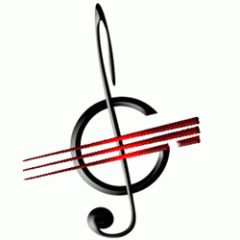Hi
The BBC recently transmitted a programme (over Christmas 2012) which they called The World’s Richest Songs. In the programme they tried to find the Top 10 songs that had earned the most money ever. Now this is quite a task, and obviously to get really precise numbers is nigh impossible, but the programme was rather interesting, especially in what tunes it found to be the most profitable.

On hearing about this programme my natural instinct was to guess what the top few might be: Candle In The Wind, maybe We Are The Champions, Titanic Theme Tune, I Will Always Love You, maybe Everything I Do, I Do It For You? Basically recent big hits of the last 20 odd years or so.
Well I could not have been more wrong. In fact there was only one song that you could, by a real stretch, be called modern, and that was Sting’s “Every Breath You Take”. That was written way back in 1983, and I was amazed that it even made the list. So what are the top 10 richest songs according to the BBC? Here they are:
1. Happy Birthday to you
2. White Christmas
3. You’ve Lost That Loving Feeling
4. Yesterday
5. Unchained Melody
6. Stand By Me
7. Santa Claus Is Coming To Town
8. Every Breath You Take
9. Pretty Woman
10. Chestnuts Roasting On An Open Fire
Surprised? Yeah, me too. For a start there are three Christmas tunes, only one Beatles tune and nothing really modern. So how could this list make sense? Well if you think about what makes money, you really need something that will sell all the time, and Christmas tunes sell every Christmas as long as they remain popular. Then, on further reflection, one realises that the older the tune the more time it has had to make money, even if it is only for 4-6 weeks a year (as with Christmas tunes). If you check the history of Stand By Me (written in 1960), that became a bigger hit second time round, as it was re-released to coincide with the movie of the same name it was used for in 1986. Every Breath You Take also had two bites at the cherry, as it featured in the charts in the original The Police version in 1983, and then again with Puff Daddy’s (aka P Diddy, Piddle Diddle, Piffle, or whatever he calls himself now) highly successful cover version in 1997. In fact White Christmas was US No.1 three times: in 1942, 45 and 46. The record was so popular, Bing Crosby had to re-record it, as the master tape had worn out, after so many copies had been pressed from it. Another curious fact is that most modern Christmas tunes were secular in nature (no mention of Jesus Christ, Bethlehem, Mary etc, but instead of Santa Claus, Father Christmas, Rudolph), and were in fact written by Jewish song-smiths.
So how does this list compare to the highest-grossig movies ever? The current list (Jan 2013) looks thus:
1. Avatar
2. Titanic
3. The Avengers (Assemble)
4. Harry Potter and the Deathly Hallows – Part 2
5. Transformers: Dark of the Moon
6. The Lord of the Rings: The Return of the King
7. The Dark Knight Rises
8. Pirates of the Caribbean: Dead Man’s Chest
9. Toy Story 3
10. Pirates of the Caribbean: On Stranger Tides
So pretty much very different to our Top 10 music list. But if we now recalculate the list, in the only way which is fair, which is inflation adjusted, suddenly we get a similar phenomenon as with our music Top 10:
1. Gone with the Wind
2. Avatar
3. Star Wars
4. Titanic
5. The Sound of Music
6 E.T. the Extra-Terrestrial
7. The Ten Commandments
8. Doctor Zhivago
9. Jaws
10. Snow White and the Seven Dwarfs
So loads of oldies but goldies that had had decades to keep raking in the cash.
Fascinating stuff.









